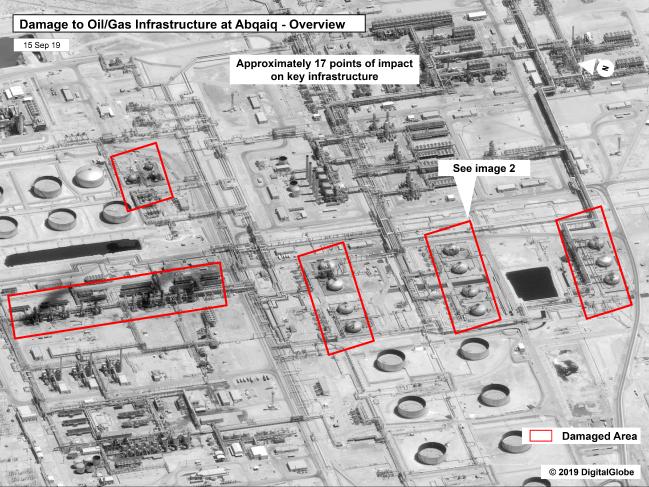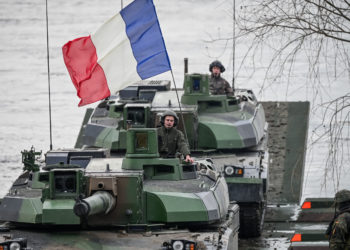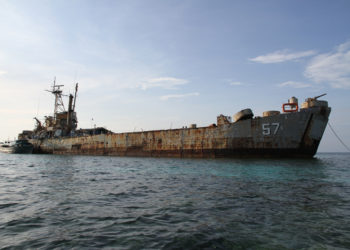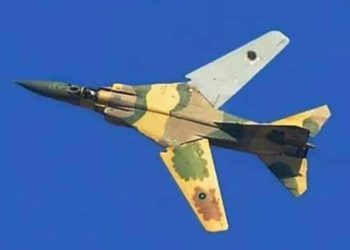The cruise missile theory. There has been a lot of controversy surrounding the attacks on two oil installations in Saudi Arabia, on Saturday the 14th of September 2019.
People have shown a lot of scepticism regarding the whole affair: How can a country at war and armed to the teeth with the best the West can offer to be taken by surprise by a cruise missile attack, people ask. What usually follows is a list of conspiracy theories and flawed technical arguments…
What comes out of it, however, is the fact people seemingly have blind faith in technology, see modern AA platforms and radars as some kind of magic wand and all-seeing eye and misunderstand some basic physics facts.
So, why did some cruise missiles fired from Iranian territory and flying through Iraqi and Kuwaiti airspace managed to breach Saudi airspace and hit targets deep inside Saudi Arabia?

Alright… Let’s talk about cruise missiles, first…
Cruise Missiles are designed to be difficult to detect and intercept. A Tomahawk will fly at 890kph at an altitude of 30 meters. A Kalibr (land attack version) will fly faster than that at an altitude of 50 meters. The AshM version of the Kalibr cruises as low as 20 meters and will drop to 5 meters or less during its terminal phase (before impact). At that altitude, such a small target will blend in with background noise/clutter/topography.
Most modern cruise missiles are able to manoeuvre and can follow the terrain, allowing them to hug the ground. Those missiles can actually navigate through various waypoints, meaning they can take a detour and take advantage of the topography before attacking its target from an unexpected direction. Worse, several missiles can be coordinated to simultaneously hit a target from different directions, saturating whatever AA defence is on site.
Finally, cruise missiles do not need to pop up before hitting their targets. They remain at low altitude up until impact.

Radars
Land based radars
are limited by line of sight, topography and the curvature of the
earth… That goes for civilian air traffic radars and military
radars attached to ballistic defence and anti-aircraft batteries.
Some radars have the capability to see beyond the horizon (OTH
radars) but those are fairly rare and very expensive… They do not
get into this equation.
People read marketing brochures for AA platforms or articles written in the press and are impressed by the figures given. Then, they are surprised when said system has not functioned as advertised in real life situations. The AN/SPY-1 radar, part of the AEGIS system is said to be able to detect a golf ball at a range of 165km and have a maximum range or around 310km. The S-400 is often quoted as having a detection range of 600km! Sounds great but…
Those figures are the maximum ranges in perfect conditions for large-ish objects flying at high altitude! The lower the object flies, the harder it will be to detect it, identify it, track it successfully and engage it. The S-400 detection range of 600km drops to around 400km for fighters size objects at high altitude… Stealth aircraft are only detected at ranges of up to 150km. The S-400 is said to have anti-cruise missiles capabilities. Do you know what the optimum detection range is for those? 40km. That’s the best case scenario figure: Flat terrain, fair weather, no background noise/clutter, and no jamming. And we are talking here about conventional cruise missiles, not the low observable ones (stealth) currently being acquired and operated by several countries…
Those limitations impact all radars, including those of the AEGIS or Patriot platforms.
Talking about the AEGIS system, which is the gold standard platform in missile interception, do you know what the optimal distance for an AEGIS system to lock onto and engage a sea skimming cruise missile/AshM is? 5 nautical miles… That’s just short of 10km. In other words, “scary close”. That’s only 6 kilometers beyond the maximum range of a Phalanx CWIS and roughly 50 seconds before impact (for a subsonic missile traveling at 850kph). That’s under a minute to detect, identify, track, lock and engage before impact. That’s how difficult it is to engage low flying cruise missiles.
As you can see, detecting incoming cruise missiles is not easy at all. To have a chance at detecting them, a ground-based radar would have to be situated between a cruise missile and its target. If the target (factory, large military base, oil refinery) is between the radar and the missile, chances are the target will mask the missile from the radar, keeping said missile undetected (due to the missile’s low cruising altitude…
Cruise missiles can be detected from the air in some circumstances… But you need the right radar for this and you meed to be looking for them! If you do not suspect any cruise missiles flying below you, why would you ask your radar to look down in the first place?! AWACS type surveillance planes are capable of seeing cruise missiles in some circumstances, but it does depend on a lot of factor and ground clutter/noise can sometimes be a problem. In any case, detecting a cruise missile from the air does not make it easier for a ground based platform to intercept it: The crew manning the AA battery know it is there, but if their own radar cannot see it, they cannot track it or engage it… In any case, how would the pilot know with certainty where the cruise missile is headed to and would there be an AA battery at the right site at the right place?
How about a plane
intercepts the cruise missile? Well, only two planes were ever
bespoke designed for the role: The F-111B and the MiG-31P…There
have been plans in the US in the past to use F-22 carrying AIM-120-6
with modified fuses in this role, but the F-22 fleet is already
overstretched as it is…. Washington is now mulling purchasing the
Iron dome for that role. Which might ring as an admission that its
own current systems are not designed for the cruise missile
interception role…
In any case, Saudi Arabia has no MiG-31,
no F-111B and no F-22…
What has Saudi Arabia got, then?
Well, they have the
THAAD, the Patriot, the Hawk, the Shahine and the Oerlikon Skyguard…
So they are very well equipped.
The THAAD focuses on high
altitude short and medium range ballistic missile interception.
The
Patriot focuses on medium range air defence and can take on the
medium range ballistic missile interception.
The Hawk is a medium range AA platform and the Shahine (Super Crotale) is a short range one.
The Skyguard is a SHORAD platform: Short-range point defence… And out of all the listed above, this is the one that stands the best chance at intercepting a cruise missile!!!! To put it simply, neither the THAAD nor the Patriot were designed with cruise missiles interception in mind. They do not stand a chance in that role. In fact, intercepting a cruise missile with another missile is extremely difficult. You often hear the catchphrase “hitting a bullet with another bullet”. It is that difficult. Even on the mighty AEGIS platform, the role of intercepting low flying cruise missiles and AshMs is very often down to the CWIS system… Missiles are launched, but the CWIS has a higher hit probability as far as hitting an incoming missile goes…
This is the same reason why so many cruise missiles (Israeli or other) have gone through the Syrian Air Defences in the past: The SyAD possesses very little platforms optimised or even capable of engaging cruise missiles… Within the Syrian inventory, the Pantsir is probably the best tool at their disposal for that role and they do not possess that many of them. Not enough to protect all high value sites, in any case…
Because a cruise missile flies low and takes advantage of the topography and follows the terrain, it is very difficult to detect, track and engage with another missile. Not only can the cruise missile break line of sight with the AA platform’s radar by following the terrain and blending with the ground clutter, but rules of physics still apply for the defending battery:
For an AA battery to be able to intercept a target, be it a plane, a missile or a cruise missile, it must be placed relatively close to the trajectory of said plane, missile or cruise missile… Take the S-400 battery, it has a detection range of 400 km for fighters. Draw a circle with a 400km diameter around your battery. Most objects flying within that circle will be detected. But it does not mean everything flying within the said circle can be successfully engaged. The closer to the center of the circle (your battery) the target flies, the more chance you have of scoring a kill. The closer to the edges of the circle a target flies and the more chances it will have to escape from your battery’s envelope and fly home unscathed: In this case, by the time your missile gets to where its target was when it was launched, the target will have moved outside of range already.
The higher a target flies (up to a certain point), the larger your battery’s envelope will be. As discussed above, a cruise missile flies very close to the deck…
S-400 battery will detect an incoming cruise missile at a rage of 40km. This is the figure given by the S-400 manufacturer: Almaz-Antey. That leaves the crew less than 120 seconds to positively identify the target and engage it. In a real-life situation, taking the terrain into account, the crew would be lucky to detect an incoming cruise missile within 20 km. That would leave them less than 60 seconds from detection to identify and engage. Because the envelope (circle around your battery) is so small, in this case, the chance of interception decrease rapidly should the cruise missile follow a divergent path relative to the battery.
You can see that the Abkaik oil processing installation was very well protected. It was in fact under the umbrella of a layered A2AD zone, with Patriot on medium-range AA and anti-ballistic duty and the Shahine and Skyguard playing point defence to intercept anything that would have leaked through.
And yet… This is a great setup against an air attack, but was no match against a cruise missile attack.
Let’s put things into perspective: In the 1980s, the Soviet deployed the RSD-10
(SS-20) the intermediate-range ballistic missile in Eastern Europe. The US responded by introducing Pershing 2 intermediate-range ballistic missiles and the BGM-109G land-based cruise missile in Western Europe. Both sides could target the other with a precise barrage of tactical nukes at very short notice and neither side had any means of protection against them. The fear on both sides was of a sudden decapitating strike paralysing one’s defence. This pushed both Washington and Moscow to negotiate a treaty: The INF. The INF banned the deployment of intermediate-range ballistic missiles and land-based cruise missiles. By the time the treaty was signed in 1987, it was widely considered that the world was never more than 10 minutes away from nuclear war ( flight time of some of those missiles!). Fast forward more than 30 years later ad things haven’t changed. The cruise missile is that dangerous, even if in the Saudi case, we are talking about conventional warheads and not nuclear ones. The detection and interception of such missiles remain problematic.
So, to sum up…
– Cruise missiles are designed to be hard to detect, track and engage. This is down to their size and the way they fly as well as how ground-based radars work.
– The best defence against cruise missiles is to target the launching platforms before said cruise missiles are launched… This is a well known fact and a lesson the allies learned the hard way dealing with German V-1 during WWII. The best defence against incoming cruise missiles is a cannon equipped SHORAD platform. Or possibly the Israeli Iron Dome system. SHORAD platforms will only stand a chance in intercepting incoming cruise missiles if they are situated between said cruise missiles and their targets. Keep in mind that single batteries can be defeated by a saturation attack (mass volley of missiles or concerted simultaneous attacks by several missiles coming in from different directions), as seen in Syria. You need a solid setup to stand a chance against such an attack.
– One single cruise missile will rarely bring in a whole building down. More often than not, it will most likely penetrate the building and explode within the structure, leaving the outside seemingly unscathed but the inside devastated. The comparison with buildings in Syria having been left completely flattened after Israeli raids do not stand: The Iranian attack had one missile allocated per target. The Israelis practice saturation attacks against Syrian targets, meaning that several missiles often impact one single target simultaneously or in quick succession…
-Radar coverage of a country is not all seeing: The civilian air traffic radars will cover most of a country’s airspace but are not designed to track low flying cruise missiles… AA platforms’ own radars can only survey the area where they are deployed. In any case, most ground based radar are limited by the horizon. Detection range figures given by manufacturers are often the “best case scenario” figures: Detection of a large target flying at high altitude in fair weather. You would be lucky to detect a cruise missile flying 30 meters above ground at a range of 20km. That would give your AA battery crew less than 60 seconds to positively identify the threat, track and engage it…
– The sky might be filled with satellites, but this is real life and not Hollywood: they cannot see everything everywhere all the time, they have to be at the right time and the right place and the operators must know what they are looking for… Saudi Arabia might be at war and it might operate a large fleet of potent aircraft, but it had no reasons to fly patrols along its northern border with Iraq and Kuwait. Said planes are not in the air 24/7. And when in the air, said plane’s pilots most likely focus their attention (and radar beam) ahead of them and not on the deck: If you are looking for a potential threat, you look for the most likely one… There was no reason to suspect a cruise missile attack coming across the Northern border… And as discussed above, detecting a cruise missile from the air is not easy and neither does it increase the chances of detection and interception by friendly ground-based batteries…

Abqaiq defence 
Abqaiq defence 
Abqaiq defence










